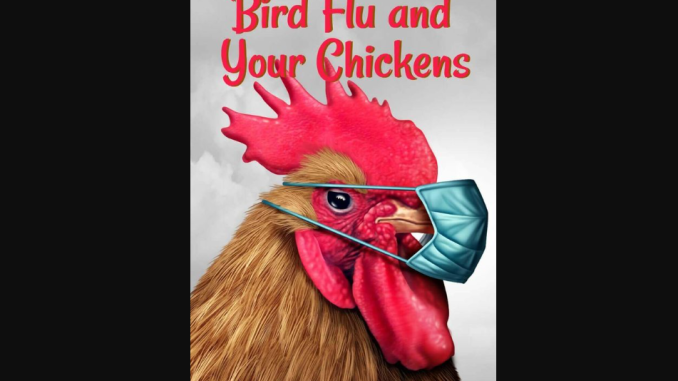
Avian influenza, often referred to as bird flu, is a respiratory illness caused by influenza A viruses. While primarily affecting birds, it can pose a concern for both poultry owners and public health officials. This article will delve into the ways avian influenza spreads amongst poultry, the different strains and their symptoms, and most importantly, the steps you can take to safeguard your flock.
Understanding the Transmission of Avian Influenza in Poultry
Domesticated birds like chickens and turkeys can contract avian influenza A viruses (AIV) through two main routes:
- Direct Contact: Infected waterfowl or other poultry carrying the virus can directly transmit it to your birds through close interaction.
- Indirect Contact: Contaminated surfaces present a significant risk factor. The virus can linger on equipment, clothing, feed, or even dust particles, and unsuspecting birds can become infected upon contact.
Wild Reservoirs and the Silent Spreaders
Wild aquatic birds, particularly ducks, geese, and shorebirds, act as natural reservoirs for AIVs. These birds often carry the virus within their respiratory and digestive tracts without exhibiting any signs of illness. Unfortunately, they can unknowingly shed the virus through their droppings and secretions, potentially infecting domestic poultry and other susceptible species.
The Two Faces of Avian Influenza: Low Pathogenic vs. Highly Pathogenic Strains
Avian influenza viruses are classified into two distinct categories based on their severity in poultry:
- Low Pathogenic Avian Influenza (LPAI): These strains typically cause minimal to no noticeable illness in infected birds. Some flocks might experience mild clinical signs like ruffled feathers or a slight drop in egg production. LPAI infections can often go undetected within a flock.
- Highly Pathogenic Avian Influenza (HPAI): In stark contrast, HPAI viruses are highly virulent, inducing severe illness in poultry with devastatingly high mortality rates, reaching up to 100% within a short period. While HPAI primarily affects multiple internal organs, some duck species can harbor the virus without showing any symptoms.
Recognizing the Signs of Avian Influenza in Your Flock
It is crucial to be observant of your birds’ health and behavior. Early detection of avian influenza is essential for prompt intervention and minimizing potential losses. Here’s what to watch out for:
- Respiratory Problems: Difficulty breathing, coughing, sneezing, or nasal discharge.
- Reduced Appetite: Birds losing interest in food or exhibiting a significant decrease in food intake.
- Lethargy: Unusual sluggishness, weakness, or a lack of normal activity levels.
- Abnormal Droppings: Changes in droppings’ consistency or color, such as watery diarrhea or droppings with a greenish tinge.
Safeguarding Your Poultry from Avian Influenza: A Multi-Pronged Approach
By implementing a combination of biosecurity measures, vaccination (where applicable), and vigilant monitoring, you can significantly reduce the risk of avian influenza in your flock:
- Biosecurity is Paramount:
- Minimize Wild Bird Contact: This is the cornerstone of prevention. Restrict access to ponds, water sources, and areas frequented by wild birds. Consider covering runs with netting and fencing them off to create a physical barrier.
- Practice Good Hygiene: Regularly clean and disinfect feeders, waterers, coops, and equipment with appropriate disinfectants. Wear gloves and protective clothing when handling potentially contaminated materials. Always wash your hands thoroughly after interacting with your birds or their environment.
- Quarantine New Arrivals: Before introducing new birds to your flock, isolate them in a separate location for a minimum of 30 days. Monitor them closely for any signs of illness during this quarantine period.
- Rodent and Insect Control: Rodents and insects can act as carriers of disease. Implement measures to control their populations around your poultry area.
- Vaccination:
- Consult Your Veterinarian: Depending on your location and the prevalence of bird flu in your area, vaccination against avian influenza might be recommended. Discuss the risks and benefits of vaccination with your veterinarian to determine if it’s the right course of action for your flock.
- Monitoring and Reporting:
- Be Observant: Regularly monitor your birds’ health for any signs of illness. Early detection is crucial for effective intervention.
- Prompt Reporting: If you suspect an avian influenza outbreak in your flock, immediately report it to your local veterinary authority. This allows for prompt investigation and helps contain the spread of the virus.
- Stay Informed: Keep yourself updated on the latest avian influenza situation in your area by following advisories from reputable sources such as your local agricultural department or the United States Department of Agriculture (USDA).
By following these comprehensive measures, you can significantly reduce the risk of avian influenza in your poultry flock. Remember, prevention is key, and vigilance is your best defense.

Leave a Reply